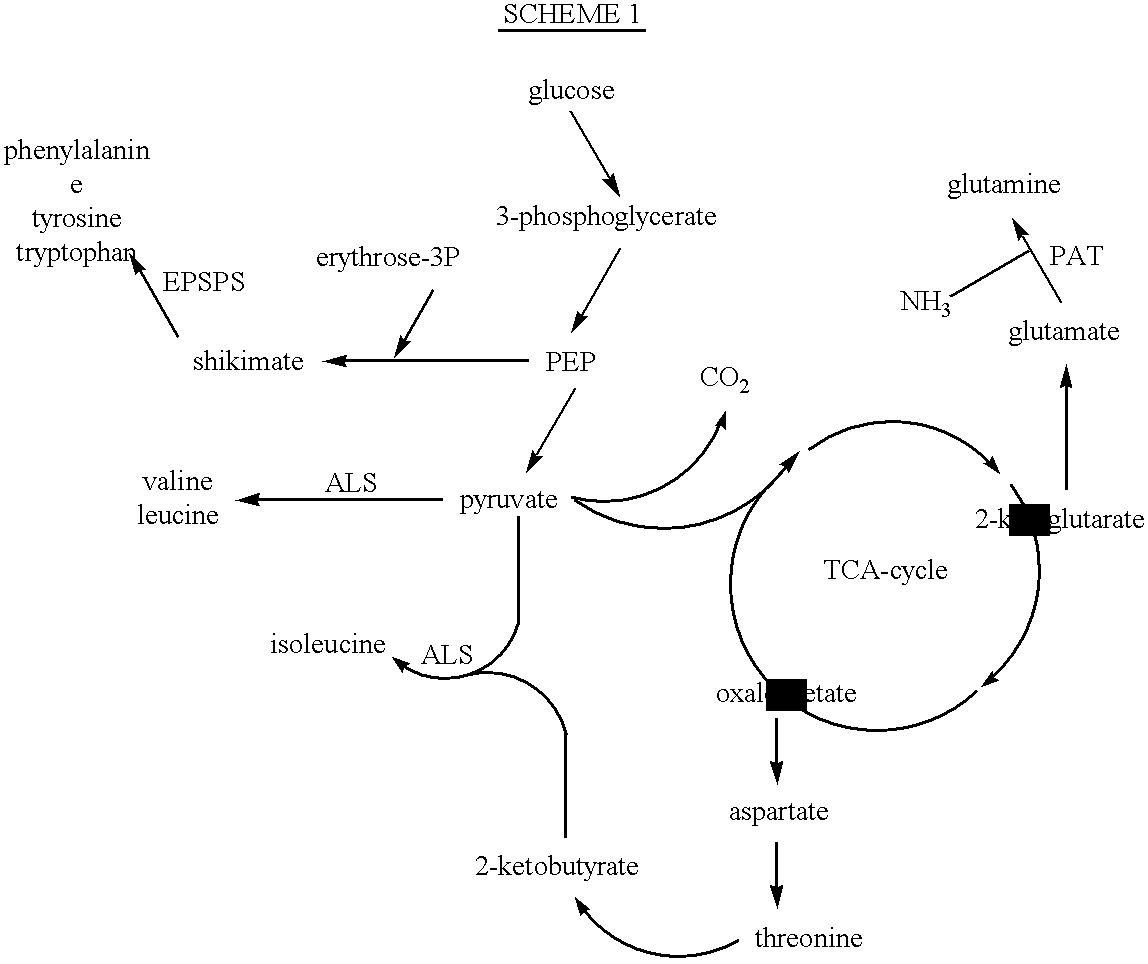Plants having resistance to multiple herbicides and its use
a technology of herbicides and plants, applied in the field of plants having resistance to multiple herbicides and their use, can solve the problems of lack of selectivity, large challenges in production agriculture, and non-selective herbicides killing or inhibiting the growth of all actively growing plant materials,
- Summary
- Abstract
- Description
- Claims
- Application Information
AI Technical Summary
Problems solved by technology
Method used
Image
Examples
example 1
Herbicide resistance genes are introduced individually or in combination into plant genomes by a variety of methods. One preferred means of gene introduction is the use of microprojectile bombardment. For example, a gene for herbicide tolerance, such as the CP4 EPSPS conferring tolerance to a level of resistance to glyphosate is placed under the control of a promoter such as the Cauliflower Mosaic Virus (CaMV) 35S promoter. The promoter and a nontranslated leader sequence such as the alfalfa mosaic virus, tobacco mosaic virus, or cucumber mosaic virus leader, is fused to the 5' end of the gene. A promoter such as the CaMV 35S promoter has its activity enhanced by duplication of a portion of the promoter sequence. A transcription termination sequence such as the CaMV 35S terminator or the nopaline synthase (nos) terminator is fused to the gene at the 3' end. Methods for accomplishing these constructions are well known in the art. This construction is introduced into an E. coli plasmi...
example 2
Development of Soybean Variety 924181339 Having a Level of Resistance to Both Glyphosate and Sulfonylurea Herbicides
Soybean cultivar 924181339 was developed from the cross A4045.times. (A4138.times.40-3-2). F.sub.2 and F.sub.3 plants were advanced by a modified pedigree selection. In 1994, F.sub.3 derived F.sub.4 lines were selected and entered in a four location preliminary yield trial. In 1995 the line was advanced to a 16 location yield trial.
924181339 has resistance to Roundup.TM. herbicide and also contains the ALS inhibitorgene for sulfonylurea resistance. 924181339 is a mid maturity group IV variety with moderate resistance to Soybean Cyst Nematode, race 3 and race 14. 924181339 is well adapted to Maryland, Kentucky and Illinois and does well on heavier soil types. The present invention has improved plant type, with good lodging resistance and good tolerance to Pod and Stem Blight (Diaporthe phaseolorum). A patent has been issued having U.S. Pat. No. 5,710,368 and is incorpor...
example 3
Development of Soybean Variety 928933959 Having a Level of Resistance to Glyphosate and Sulfonylurea Herbicides
Soybean cultivar 928933959 was developed from the cross A3304.times.A3510.sup.2 (A3237.times.40-3-2). F.sub.2 and F.sub.3 plants were advanced by a modified pedigree selection. In 1994, F.sub.3 derived F.sub.4 lines were selected and entered in a two location preliminary yield trial. In 1995 the line was advanced to a 20 location yield trial.
928933959 is a late maturity group III variety with resistance to Sulfonylurea herbicides, Roundup Ready.TM. herbicide, as well as Rps.sub.1.sup.c, conferring resistance to many races of Phytophthora Root Rot. The present invention is an improved plant type, with excellent emergence and which is adapted to heavier soil types. 928933959 has good iron chlorosis tolerance and is adapted to double crop situations and to drilled, 15 inch or 30 inch rows. A patent has been issued having U.S. Pat. No. 5,659,120 and is incorporated herein by re...
PUM
| Property | Measurement | Unit |
|---|---|---|
| resistance | aaaaa | aaaaa |
| herbicide resistance | aaaaa | aaaaa |
| disease resistance | aaaaa | aaaaa |
Abstract
Description
Claims
Application Information
 Login to View More
Login to View More - R&D
- Intellectual Property
- Life Sciences
- Materials
- Tech Scout
- Unparalleled Data Quality
- Higher Quality Content
- 60% Fewer Hallucinations
Browse by: Latest US Patents, China's latest patents, Technical Efficacy Thesaurus, Application Domain, Technology Topic, Popular Technical Reports.
© 2025 PatSnap. All rights reserved.Legal|Privacy policy|Modern Slavery Act Transparency Statement|Sitemap|About US| Contact US: help@patsnap.com

